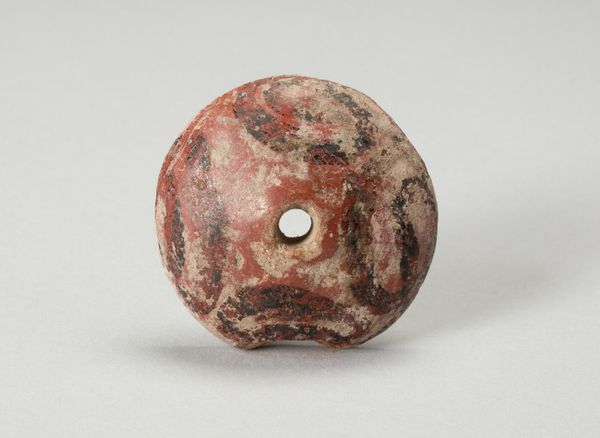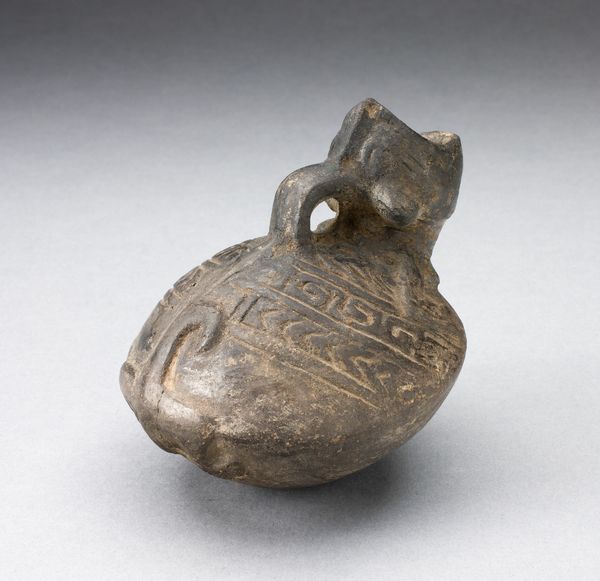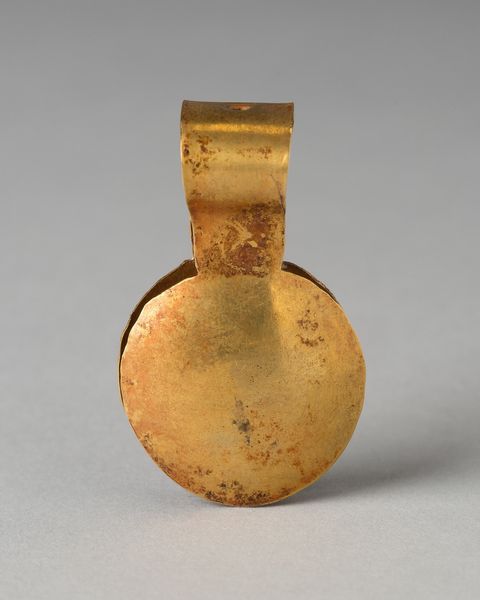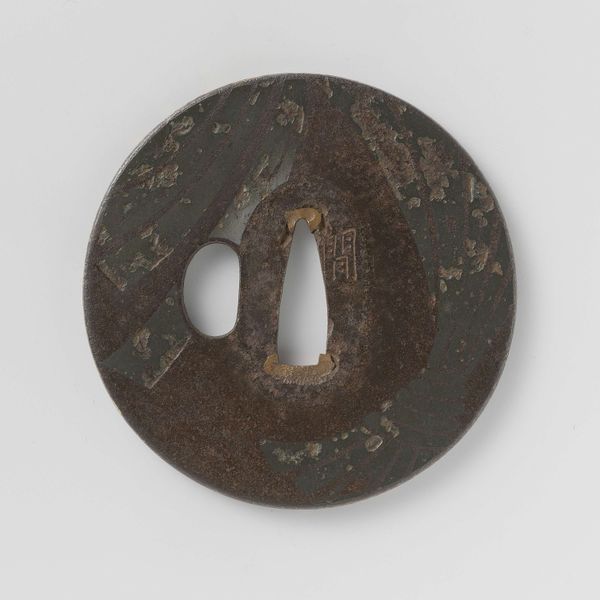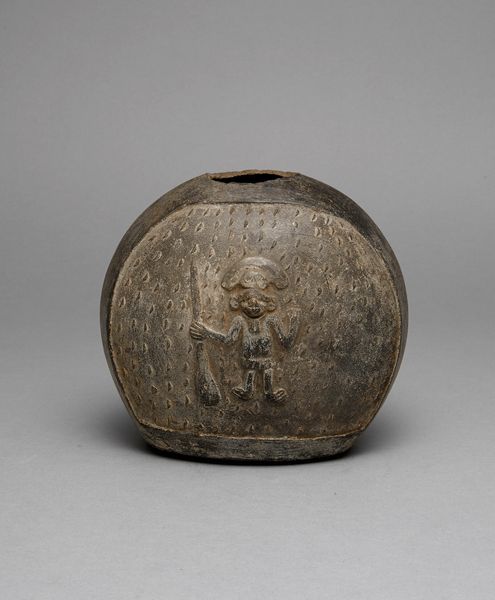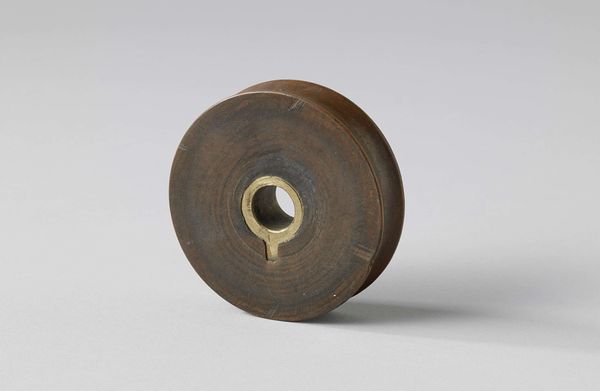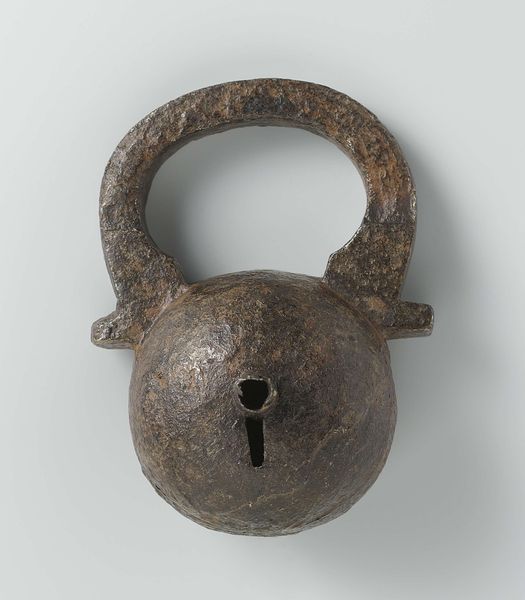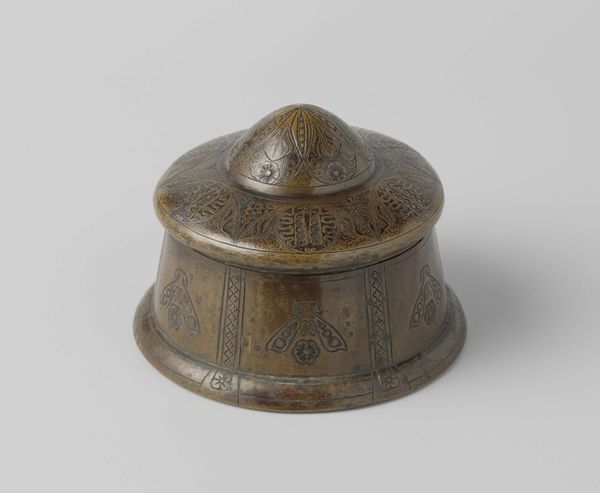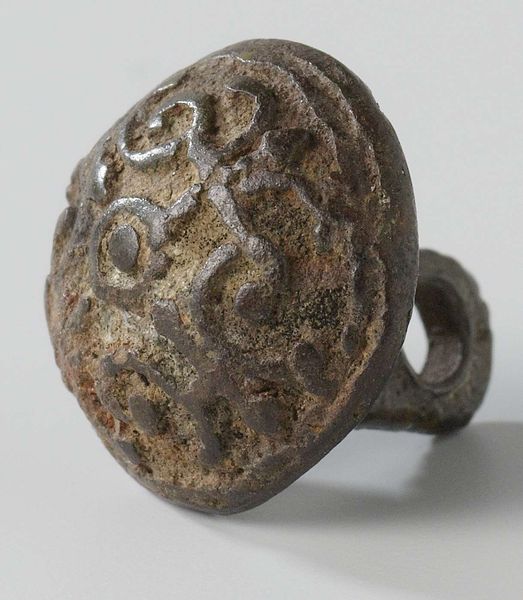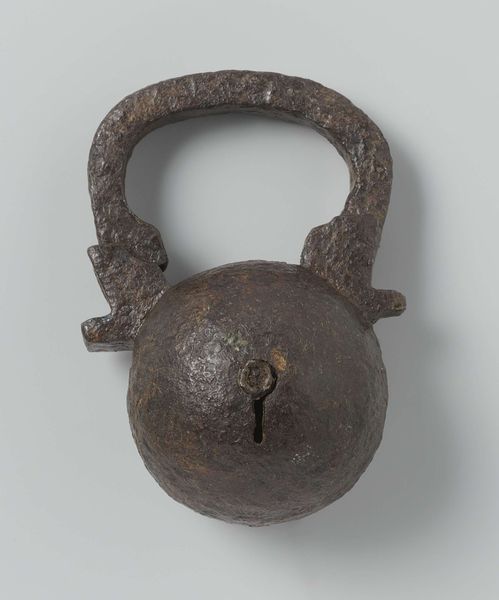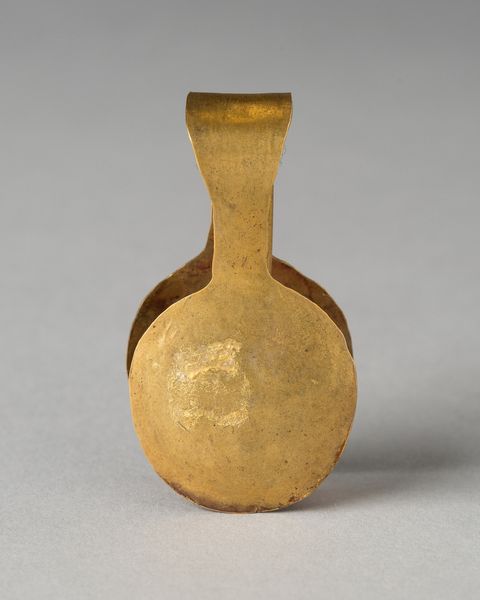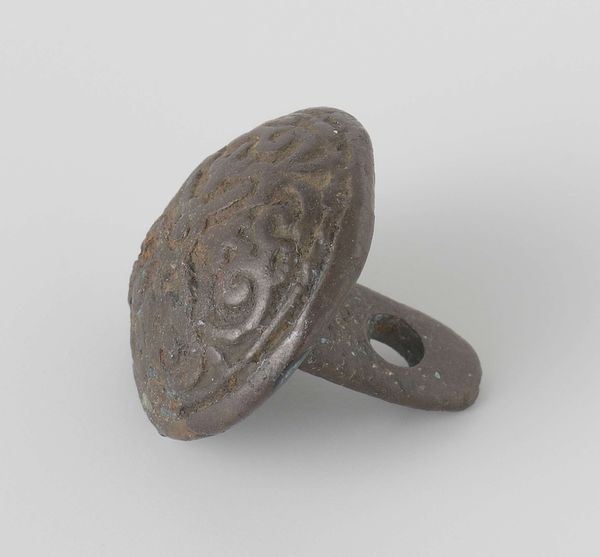
Ear Ornament or Spindle Whorl with Modeled Design Possibly 1450 - 1521
0:00
0:00
ceramic, earthenware, terracotta
#
ceramic
#
earthenware
#
geometric
#
ceramic
#
terracotta
#
indigenous-americas
Dimensions: 1.3 × 2.4 cm (1/2 × 15/16 in.)
Copyright: Public Domain
Curator: Immediately striking is the circular nature of the form—almost lunar in its stark simplicity. What are your first thoughts? Editor: Well, aside from thinking I could use it as a very stylish donut, there’s a grounding, elemental feel to it. That earthen color just speaks of the soil itself. Curator: Precisely. What we have here is identified as an "Ear Ornament or Spindle Whorl with Modeled Design," crafted by the Aztec (Mexica) people, dating back possibly to 1450 to 1521. Its materiality—terracotta and earthenware—are crucial to understanding its cultural context. The modeled relief demonstrates the pre-Columbian mastery of ceramic arts. Editor: Ear ornament OR spindle whorl? It's like saying this could be a fashion statement or… Bobbins and thread? What's more likely, do you think? Either way, somebody cared enough to carve those intricate patterns! Curator: The dichotomy is intriguing. It prompts us to consider dual functionalities— adornment and utility. The geometric motifs demand rigorous semiotic analysis, likely encoding cosmology or societal structure. That central void is fascinating. Editor: To me, those spiral designs give it a sort of hypnotic buzz—makes you wanna stare at it till you get dizzy. There is a power, almost magical, in its earthy simplicity that transcends whatever its use might have been. Makes me wonder who spun thread with this? Who wore it? Curator: And that brings us to the crux of understanding indigenous American art. These works intertwine the practical and the sacred, demanding we look past Western art historical norms. As a symbolic piece it represents sophisticated, complex social relationships, creation stories, and perhaps even spiritual practices. Editor: Yeah, I guess looking at it now, the real art is less in the object itself, and more about imagining it in someone's life. All that potential for meaning swirling around such a simple shape is kind of astonishing, actually. Curator: Agreed. By decoding this artifact through formal vocabulary and subjective interpretation, we arrive at an enriched appreciation. Editor: Right—spinning forward! I think I'll have nightmares about Aztec fashion and giant donuts.
Comments
No comments
Be the first to comment and join the conversation on the ultimate creative platform.
